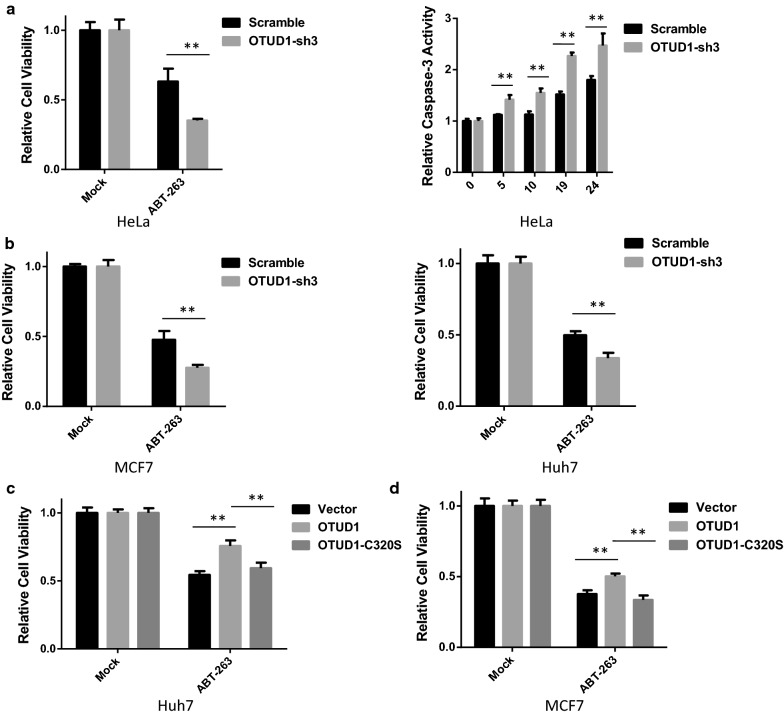Fig. 4.
OTUD1 regulates sensitivity to a BH3-mimetic compound in cancer cells. a HeLa cells were infected with a scramble or an OTUD1-shRNA lentivirus to generate stable cell lines. The HeLa cells were then seeded into 96-well plates and treated with the BH3-mimetic compound ABT-263 (10 µM). The cell viabilities were determined using the CellTiter-Glo Luminescent Cell Viability Assay method. The caspase3/7 activities were measured using the Caspase-Glo® 3/7 Assay. b MCF7 and Huh7 cells were infected with a scramble or an OTUD1-shRNA lentivirus to generate stable cell lines. Then, both cell lines were seeded into 96-well plates and treated with the BH3-mimetic compound ABT-263, and the cell viabilities were determined. c Huh7 cells were infected with empty vector, OTUD1 or OTUD1-C320S lentiviruses to generate stable cell lines. Then, the Huh7 cell line was seeded into 96-well plates and treated with the BH3-mimetic compound ABT-263 (15 µM) and the cell viabilities were determined. d The same procedure was followed as described in c, except the cells tested are MCF7 cells. **p < 0.01

